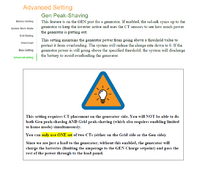A bit of speculation here.... Be advised!
Just an FYI for anyone following this thread. Today at the shop we opened up a Sol-Ark 15K (to look at the grid transfer relays) then we took a look at the CT sensors inside and the sensors on the grid input wires are actually not PCB mounted, they are just rings over the wires, with the signal wires going to a plug on the PC board. (I had seen this before, but kind of forgot about it.) The gen input CT(s), on the other hand, seem to be PCB integrated, but I could only see one on L1.... Which makes me wonder if maybe there really is only a sensor on L1 and none on L2, with the Sol-Ark estimating the L2 current. I am somewhat speculating on this, but if this is the case, then I can totally see why Sol-Ark would want to completely discontinue the gen shave option! Monitoring only a single line would never work well!
Again, I am speculating from what I saw on the PCB. Don't take this as gospel! But this is what it would appear like to me.



